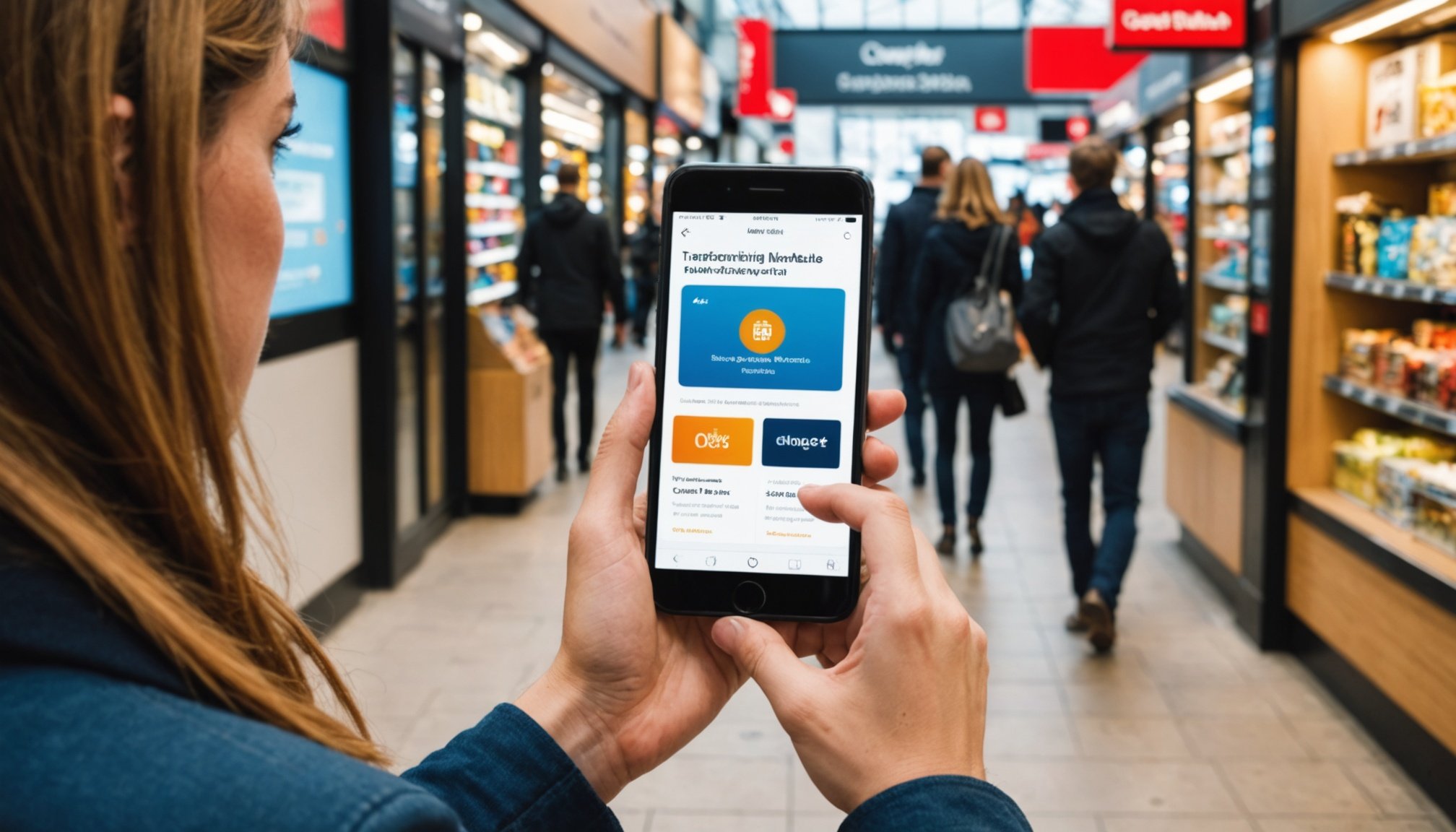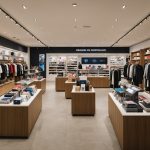Transforming Mobile Retail: Innovative Tactics for UK Retailers to Enhance Customer Experience
In the ever-evolving retail landscape, UK retailers are facing a critical juncture where embracing innovative mobile strategies is no longer a choice, but a necessity. The rise of mobile shopping has revolutionized the way customers interact with retailers, and those who adapt quickly are reaping the rewards. Here’s a deep dive into the innovative tactics that UK retailers can employ to enhance the customer experience through mobile retail.
Leveraging Digital Transformation
Digital transformation is at the heart of modern retail innovation. The 2024 RTIH Innovation Awards, for instance, highlight several UK retailers who have made significant strides in this area[1].
Also to see : Revolutionizing fitness journeys: how smart technology is enhancing member experience in uk gyms
Integrating Innovative Technologies
Retailers like Morrisons have partnered with Focal Systems to deploy AI-powered solutions that improve customer availability and sales. By using tiny on-shelf cameras combined with Focal OS, Morrisons has increased customer availability by over 2%, reduced operational tasks, and enhanced both customer and colleague satisfaction[1].
Key Takeaways:
In parallel : Empowering financial advisors in the uk: revolutionizing client services through innovative technology
- AI Deployment: Use AI to optimize inventory management and improve product availability.
- Real-Time Data: Utilize real-time data from on-shelf cameras to adjust stock levels and reduce waste.
- Customer Satisfaction: Enhance customer satisfaction by ensuring products are always available.
Personalized Shopping Experiences
ASOS, a leading online fashion retailer, has optimized its mobile app to provide a personalized shopping experience. The app includes features like the Fit Assistant, which recommends sizes based on past purchases and customer details, and the Style Match tool, which allows users to upload photos to find matching products[3].
Example:
- Visual Search: Implement visual search technology to help customers quickly find products by uploading photos.
- Personalized Recommendations: Use customer data to provide tailored recommendations, increasing the likelihood of purchases.
- Mobile Optimization: Ensure the mobile app is designed to remove friction and match the user’s lifestyle.
Mobile Shopping Apps: A Game-Changer
Mobile shopping apps have become a crucial tool for retailers to engage with customers and drive sales.
ASOS: A Case Study
ASOS’s mobile app is a prime example of how mobile shopping can transform a business. With 70% of traffic and 58% of purchases coming from the mobile app globally, ASOS has seen significant growth. The app’s features, such as location and activity data-driven messaging, have led to a 75% increase in customer conversions and a 146% increase in average revenue per recipient[3].
Practical Insights:
- Data-Driven Messaging: Use location and activity data to send contextual messages to customers, increasing conversions.
- Personalization: Develop tools that help shoppers find products based on their preferences and personal details.
- User Experience: Optimize the app to match the user’s lifestyle, removing pain points and enhancing the shopping experience.
Omnichannel Retailing: Bridging the Gap
Omnichannel retailing is about creating a seamless shopping experience across all channels – online, mobile, and physical stores.
John Lewis: A Pioneer in Omnichannel
John Lewis, a UK retail giant, has rapidly digitalized services that were previously only available in-store. During the pandemic, John Lewis saw a significant shift to online shopping, with Johnlewis.com accounting for 75% of the brand’s sales. The company has also developed mobile point of sale (mPOS) capabilities, allowing staff to serve customers anywhere in the store or even outside, using a single, integrated system[2].
Key Strategies:
- Integrated Systems: Develop systems that allow for seamless transitions between online and in-store shopping.
- Mobile Point of Sale: Implement mPOS to enhance customer service and flexibility.
- Click and Collect: Offer click and collect services to drive footfall back into physical stores.
The Importance of Mobile Charging Facilities
In an increasingly connected world, mobile devices are central to the shopping experience. However, battery anxiety can disrupt this convenience.
Enhancing the Shopping Experience
Providing mobile charging stations and lockers can elevate the overall shopping experience. These facilities not only address the practical need of keeping devices charged but also encourage longer dwell times, increased engagement with in-store offerings, and enhanced brand loyalty[4].
Benefits:
- Customer Satisfaction: Reduce battery anxiety and ensure a smooth shopping experience.
- Marketing Opportunities: Customize charging stations with logos, colors, or advertisements to enhance branding.
- Increased Engagement: Encourage longer visits and increased interaction with in-store offerings.
Using Data Analytics to Drive Customer Loyalty
Data analytics is a powerful tool for retailers to understand and engage with their customers better.
EY’s Approach to Data Analytics
EY emphasizes the importance of connected data in creating consumer experiences and lasting value. By focusing on three key areas – data collection, analysis, and application – retailers can orchestrate continuous customer journeys and increase customer lifetime value[5].
Actionable Advice:
- Collect Relevant Data: Gather data on customer interactions, preferences, and behaviors.
- Analyze Data: Use advanced analytics to understand customer patterns and preferences.
- Apply Insights: Implement personalized marketing strategies and improve customer service based on data insights.
Augmented Reality and Social Media Integration
Augmented reality (AR) and social media integration are emerging trends that can significantly enhance the shopping experience.
AR in Retail
AR can help customers visualize products in real-time, making the shopping experience more immersive. For example, using AR to see how furniture would look in a customer’s home before making a purchase can increase customer satisfaction and reduce returns.
Example:
- Virtual Try-Ons: Implement AR virtual try-ons for clothing and accessories to enhance the shopping experience.
- Product Demonstrations: Use AR to demonstrate product features and benefits, increasing customer engagement.
Supply Chain Optimization
A well-optimized supply chain is crucial for ensuring that products are available when customers need them.
Generative AI in Supply Chains
Generative AI can revolutionize supply chain management by predicting demand, optimizing inventory, and streamlining logistics. By using AI, retailers can respond more effectively to changes in demand and ensure that products are always available[5].
Key Strategies:
- Demand Forecasting: Use AI to predict demand and adjust inventory levels accordingly.
- Inventory Management: Optimize inventory management to reduce waste and ensure product availability.
- Logistics Optimization: Streamline logistics to ensure timely delivery of products.
Table: Comparing Innovative Retail Strategies
| Strategy | Benefits | Examples |
|---|---|---|
| AI Deployment | Improved product availability, reduced waste | Morrisons with Focal Systems[1] |
| Mobile Shopping Apps | Personalized recommendations, increased conversions | ASOS[3] |
| Omnichannel Retailing | Seamless shopping experience, increased customer satisfaction | John Lewis[2] |
| Mobile Charging Facilities | Reduced battery anxiety, increased dwell times | Various retail environments[4] |
| Data Analytics | Personalized marketing, increased customer loyalty | EY’s approach[5] |
| Augmented Reality | Immersive shopping experience, increased customer engagement | Virtual try-ons and product demonstrations |
| Supply Chain Optimization | Predictive demand forecasting, optimized inventory management | Generative AI in supply chains[5] |
Transforming mobile retail is not just about adopting new technologies; it’s about creating a holistic customer experience that spans across all channels. By leveraging digital transformation, mobile shopping apps, omnichannel retailing, mobile charging facilities, data analytics, augmented reality, and supply chain optimization, UK retailers can enhance customer satisfaction, drive loyalty, and stay ahead in the competitive retail industry.
As Will Rooney from John Lewis aptly puts it, “Innovation is about curiosity, creating something that can make a real difference in people’s lives, and refusing to settle for the mediocre.”[2] By embracing these innovative tactics, retailers can ensure a future where technology and customer experience are seamlessly intertwined.
Best Practices for UK Retailers
Crafting a successful retail strategy in today’s digital age involves understanding best practices for mobile retail and implementing effective optimization strategies. One foundational approach is to develop an omnichannel strategy. This ensures a seamless experience across all platforms, allowing customers to easily navigate between online and in-store shopping. Integrating physical and digital channels enhances customer engagement and satisfaction.
Regular updates and testing of mobile platforms are crucial to maintaining an optimal user experience. A retailer’s app or mobile site must be responsive, fast, and user-friendly. By frequently analyzing your platform’s performance and usability, you can identify potential issues before they impact customer satisfaction. This approach not only fosters a smooth shopping experience but also enhances the retailer’s reputation.
Security is another critical element. Building trust with consumers involves ensuring secure transactions and developing robust privacy policies. Given the rise of cyber threats, UK retailers must prioritize protecting customer data and ensure that all transactions remain secure. Displaying trust badges and providing clear information about privacy policies can reassure customers and build long-term loyalty.
Implementing these best practices for mobile retail and optimization strategies can significantly boost a retailer’s competitiveness and customer trust in an evolving market.











